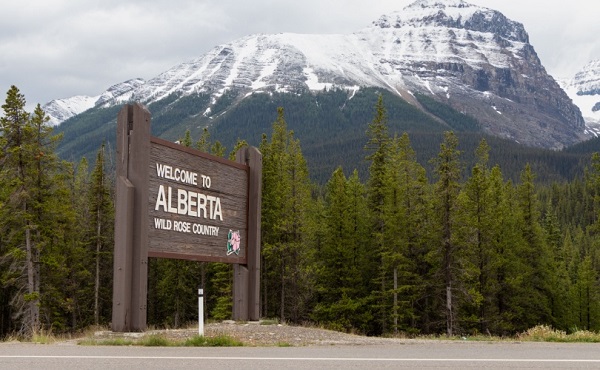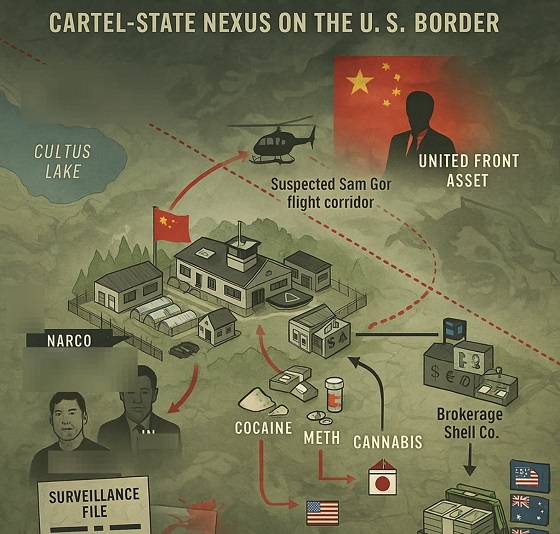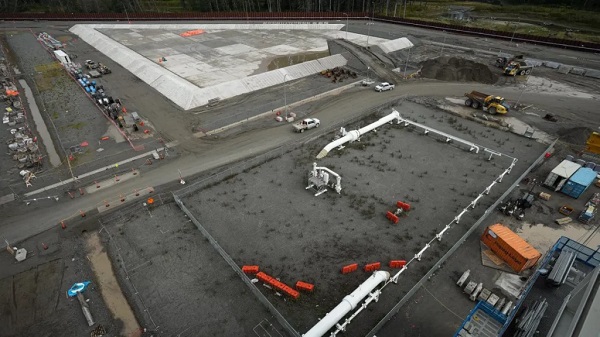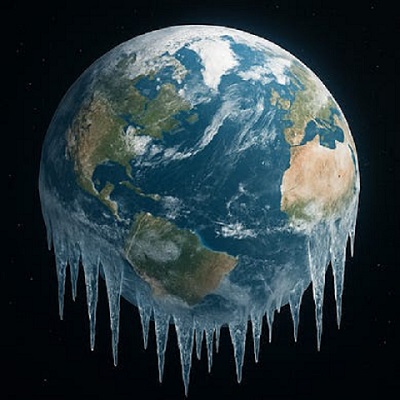Bruce Dowbiggin
Rogers Buys Out Bell In MLSE Shakeup: What Does It Mean For Fans?

There is an old joke that Canada has two seasons. Summer. And the months when the Toronto Maple Leafs lead the nightly Canadian sports networks. Perhaps it’s not that bad, but for those who don’t live in southern Ontario it often feels that way.
The reason, some said, for this Buds obsession was that both TSN and Rogers Sportsnet were part owners of the team through Maple Leaf Sports & Entertainment, a business giant created in 2011 when the warring telcos took equal percentage shares in MLSE (Larry Tanenebaum took the final 25 percent, now 20 percent after selling a share to The Ontario Municipal Employees Retirement System.)
At the time the merger of Bell (TSN) and Sportsnet (Rogers) was compared to Twitter and Facebook deciding to partner. Such was the rivalry that many predicted it wouldn’t last. But it did—if you don’t include Stanley Cups. Until this past week when it was announced that, if approved, Rogers will buy out Bell’s stake in MLSE, leaving it with 75 percent ownership. The process should close next year.
Rogers also has an option to buy out Tanenbaum next year, giving it complete control of the Leafs, Raptors, Argos (CFL), Toronto FC (MLS) and Toronto’s ScotiaBank Centre, among other baubles. (The new Toronto WNBA team is owned by Tannenbaum and several partners.)
Why the deal? Why now? Despite the huge national audience for the NHL, NBA and MLB, the component parts are said to be underperforming in a time when equity in sports franchises is soaring. Rogers’ national NHL TV contract is a significant drain on revenues. The Blue Jays’ flopping in the standings has left them a “stranded money-losing team” whose value isn’t fully reflected within Rogers. The Raptors are now also-rans.

Bell’s debt rating was downgraded to one notch above junk in August by Moody’s Investors Service. While not to the point of selling pencils there’s a thought that packaged as a group under one owner, the teams will now be more lucrative and, possibly, lead to an IPO in the future.
What does it mean for sports fans? For now, not much change. TSN is getting a 20-year agreement to get 50 percent of the regular-season Leafs and Raptors games. So it will have an NHL/ NBA presence until April. (It also has regional Montreal Canadiens rights.) TSN also has a strong NFL, tennis and golf presence. Rogers will have the existing property rights for the NHL playoffs as well as regional interests in Vancouver, Calgary, Edmonton and Ottawa. Plus its existing monopoly on the Blue Jays broadcasts.
Bell is reportedly interested in cutting its property inventory and concentrating on “5G, cloud and enterprise solutions”. TSN says it remains the prime media backer of the CFL, even though it no longer has an ownership position. Mediocre Toronto FC remain an add-on with a niche audience. As NHL national rights holder, Sportsnet (using CBC as a cutout) will still be the major outlet for postseason hockey. It’s also the exclusive home of the Blue Jays and the MLB postseason.
What does it mean in business terms? Despite the apparent cordiality of the deal, there is a fly in the ointment should digital companies such as Amazon, Prime, Apple, YouTube or Disney decide to bid on the primo national NHL broadcast rights packages. Already big leagues such as NFL, MLB and NBA have hived off packages to these outfits. Could they drive the price past Rogers’ comfort zone?
All this begs the question of what happens to the Raptors, Argos and Toronto FC which have fallen from their hip status of years prior. It’s well known that Rogers execs aren’t fond of Raptors president/ GM Masai Ujiri. Will they get the love in the C suite to bid on the top basketball contracts? Ditto Toronto FC, a pet project of Tanenbaum’s. It competes nationally with other Canadian teams. Will it have an ally in the front office?
If there is an ally it will have to be the peripatetic new CEO Keith Pelley who returns to Canada from running the European PGA Tour after stints running TSN, Rogers Sportsnet, the 2010 Winter Olympics and the Toronto Argos. Pelley knows all the broadcast and sports players firsthand from his prior gigs. He’s seen as an innovator but he also has good friends in the traditional sports leagues.
The one certainty is that cable and satellite packages will not decrease in price. Nor will ticket prices as pro sports continues to stretch the boundaries on how much people will pay for tickets (still a key revenue for NHL owners). And, for those wondering, the chances of leading newscasts with a Maple Leafs practice will be remain very strong for the future.
Bruce Dowbiggin @dowbboy is the editor of Not The Public Broadcaster A two-time winner of the Gemini Award as Canada’s top television sports broadcaster, he’s a regular contributor to Sirius XM Canada Talks Ch. 167. His new book Deal With It: The Trades That Stunned The NHL And Changed hockey is now available on Amazon. Inexact Science: The Six Most Compelling Draft Years In NHL History, his previous book with his son Evan, was voted the seventh-best professional hockey book of all time by bookauthority.org . His 2004 book Money Players was voted sixth best on the same list, and is available via brucedowbigginbooks.ca.
Bruce Dowbiggin
Ireland Today: The Bittersweet Tradeoff Of Carney Embracing Europe

Dublin: for those who’ve travelled to Ireland the past 50 years the transition is stunning. Even from ten years ago, when the previous market dip hit the nation, the current iteration is remarkable. For a nation that has historical sites dating from 5000 BC to the present, the claim that these are Ireland’s finest days is plausible.
From Dublin to the rocky outcrops of the Wild Atlantic West, the nation is teeming with people and energy. It’s not even the tourist season yet, but lineups to see Kilmainham Gaol or Blarney Castle or the Titanic Experience are lengthy. In Dublin the streets are positively jammed with locals (many young), tourists and a swath of nationalities from places most Irish can’t locate on a map.

No matter where they’re from they carry the same craic that has made Ireland a joyous place to wile away a day chatting locals. Humour and help are the watchwords. Our Uber drive was a Romanian who’s been in Dublin 35 years, and he chatted our ears off in his Romanian/ Irish accent en route to the airport. As our Uber driver noted, there’s plenty of work and lots of opportunity.
The old docklands along the Liffey have been ripped up to produce modern office complexes, hotels and arenas that seem more like Geneva than Dublin. Traditional double-deckers still ply the streets, but they share the road with a modern streetcar system. Irish food— so long demeaned as inedible— is now the toast of the gastro world. The NFL plays at the modern Aviva Stadium, and the music scene is flourishing in clubs and stages around this city founded by the Gaels in the 7th century.
The remainder of Ireland is no less impressive. A modern highway network now gets you from Dublin to Galway in two hours and Cork in two-and-a-half hours. Yes, the narrow lane ways and paths that criss-cross the greenery are still quaint. But transportation is not the trial it once was. E-charging stations are omnipresent.
Which leads one to wonder how was the conversion achieved. Ireland is famous for its ability to back losers in politics. From their own nationalists, who ended up at the end of a rope or in front of a firing squad, to the imperial powers— France, Spain, Germany— they hoped would save them from England, Ireland has a bloody past. Its own independent movement launched on Easter weekend in 1916 required a cruel civil war (see Michael Collins) and an equally nasty partition to finally create the Irish Free State.
One benefit of all this self-imposed pain has been Ireland’s withdrawal from most of the 20th century’s carnage. Where a town square in England, Canada or Australia would honour the copious dead from WW I or WW II, in Ireland the town square honours Padraig Pearse, John McBride, James Connolly or Thomas Clarke. With no European wars to prosecute Irish cities were not bombed and their downtowns resemble themselves from centuries ago.
But still you may wonder where has the money come from to spark this turnabout? Well, Ireland stayed with the EU when England voted for Brexit, and the benefits are easy to see. Where there were few or no jobs 25 years ago, the EU has showered Ireland with investment money. It has enabled Ireland to offer lucrative tax deals to multinationals to move to the Emerald Isle. The results are palpable.

The price is less so. And in Ireland one can see a warning for Mark Carney’s Canada. The new PM is a dedicated Europhile. Carney has made no secret of his longing to cut deals with the boys from Brussels. He told Canadians that the traditional relationship with the U.S. was over, and while that was crass electioneering, no one expects him to abandon the values of the EU.
While there will be manna from the EU (should it stay solvent) there will also be a quid pro quo. Canadians who blissfully voted for Carney should realize that means doubling down on the climate extremes of carbon taxes and failed new tech that currently hobble the EU.
As Ireland has learned, in exchange for its money the EU wants you to also accept its gender dysphoria and a brand of immigration politics that sees Ireland today embracing Hamas and the most virulent brand of anti-semitic groups while seeking to silence its former sports hero Conor McGregor when he talks of losing Irish culture to an immigrant wave who neither care nor endorse traditional Irish culture. .

It also means adherence to the censorship regimes of the EU where Germany plans to silence its most popular party, the AFD, for heresies against the new religion of Climate/ Culture. Irish politics is radical, and a Canada that fits itself under the EU influence will find not just a continuation but an extension of the Justin Trudeau disastrous regime. Which will keep Alberta in conflict with the Ottawa mandarins.
So do visit Ireland. The people are wonderful, the land is stunning and the energy is palpable. When you leave bring your memories home with you. But leave Irish/ EU politics behind.
Bruce Dowbiggin @dowbboy is the editor of Not The Public Broadcaster A two-time winner of the Gemini Award as Canada’s top television sports broadcaster. His new book Deal With It: The Trades That Stunned The NHL And Changed Hockey is now available on Amazon. Inexact Science: The Six Most Compelling Draft Years In NHL History, his previous book with his son Evan, was voted the seventh-best professional hockey book of all time by bookauthority.org. You can see all his books at brucedowbigginbooks.ca.
2025 Federal Election
The Last Of Us: Canada’s Chaos Election

Show me good loser and I’ll show you a loser— Leo Durocher
There’s an expression that goes, you’re not allowed to die until all the people in your life have disappointed you. That trenchant observation is particularly relevant to those who woke up on April 29 to discover that their neighbours and friends in Canada have opted to give the federal Liberals (under new leader Mark Carney) another four years to continue Canada’s descent into irrelevance.
These are the same Liberals sans Carney who were polling in the low 20s six months earlier. Their cabinet members were quitting in droves. In the finest Wag The Dog tradition, a sure victory for Canada’s Conservatives was then transformed into a humiliating defeat that saw the Tories leader Pierre Poilievre lose the seat he’d represented for 20 years. The debate in the chattering classes now is how much was Poilievre’s fault?
In a minor vindication the Liberals were seemingly denied a majority by three seats (169-144) . How they balance that equation to advance their pet projects on trade, climate, gender, free speech, native rights and Donald Trump was unknowable Which is why the Grits have turned to dumpster diving MPs like Elizabeth May and keffiyeh-clad NDP to achieve a workable majority..

Suffice to say that neophyte Carney, without any support system within the Liberals, is being highly influenced by the Justin Trudeau faculty lounge left behind after the disgraced three-term PM slunk off into the night.
It’s not all beer and skittles. No sooner had the Liberal pixie dust settled than Carney was hit with Bloc leader Yves-Francois Blanchet announced unequivocally that energy pipelines were still a no-go in electrified Quebec. Alberta premier Danielle Smith lowered the requirement for a separation referendum from 600 K signatures to around 170 K— a very doable mark in pissed-off Alberta.
Saskatchewan premier Scott Moe outlined his demands on Carney if his province is not to join Alberta. And former British PM Tony Blair, who’d worked with Carney in the UK, announced that Carney’s pet project Net Zero was a loser for nations. Finally RBC revealed it was moving beyond diversity toward “inclusion” by removing “unconscious bias” among its upper ranks.
Such is the backwash from April 28. If you listened to the state-supported media on election night you might think that Trump had picked on poor, innocent friend next door Canada. His outrageous 51st state jest did send the Canadian political apparatus into panic. A Liberal party that proclaimed Canada a postmodern state with no real traditions (lowerering flags to half mast for six months to promote their Rez School genocide hustle) suddenly adopted the flag-waving ultra-patriotic visage of expatriate comedian Mike Myers.
Instead the commentariat was spitballing about how to make the House of Commons function more smoothly or if Carney should depart for Europe immediately or in a month to meet his true constituents in the EU commentariat. China? Wassat’? Urban crime? I can’t hear you. Canada as fentanyl capital of the West? Not interested.
Astonishingly, many people who should know better bought it. It was Boomers waking from a long nap to impose their cozy values one final time on the nation they’d created via Trudeau. Comfy ridings like Oakville, Burlington, North Vancouver, Ottawa Centre and Charlottetown mailed it in for another four years. Academic hotbeds like Western (London), Laurier (Kitchener), Waterloo, UNB (Fredericton), U Calgary (Confederation) Alberta (Strathcona) and UBC (Vancouver) also kept the radical dream alive.
Meanwhile shrieks of “Panic!” over Trump decimated the Bloc (22 seats) and the NDP (7 seats) with their support transferred to a banker-led party that had been poison to them only six months earlier. You could not have written a more supportive script for a party who had neglected the essentials in traditional Canada while pursuing radical policies to please the globalists of the West.

Speaking of time capsules, you’d have been hard-pressed to find a more retro scene than the one produced by the legacy TV networks. With their emphasis on the horse-race story the tone, the panels, the hosts could have easily been teleported from 1990s. While many were interested in the micro of government finance, most listeners were expecting maybe a word or two on the collapsed state exposed by Trump’s aggressive negotiating.
As we’ve mentioned often before, Canada’s allies are appalled by the takeover of the country by malign actors, drugs traffickers, money launderers, real-estate manipulators and Chinese subterfuge. Trump’s generic reference to the border was a catch-all for the corruption swallowing the election process and the finance of the country.
That avoidance was echoed by pollsters who spent the night talking about how the final figures reflected their findings. Except for those that didn’t— Conservatives vote tally over 41 percent and Liberals well under 200 seats. What was avoided was the cumulative effect of highly inflated Liberal polling during the campaign, the “why-bother?” narrative they sold to voters appalled by the Liberals manipulation of the process to switch leaders and hold a micro-campaign of 36 days.
While Donald Trump has announced he’ll work with Carney on tariffs, it’s still highly likely that this was the final Canadian election fought by the old rules where the have-nots (Atlantic Canada) the haves-but-outraged (Quebec) and the indolent (Ontario) control the math for making government. The money pump (Alberta, Saskatchewan) will seek to attract eastern BC and southern Manitoba to their crew. In the worst case Carney may be the nation’s final PM of ten provinces plus territories.
Bruce Dowbiggin @dowbboy is the editor of Not The Public Broadcaster A two-time winner of the Gemini Award as Canada’s top television sports broadcaster. His new book Deal With It: The Trades That Stunned The NHL And Changed Hockey is now available on Amazon. Inexact Science: The Six Most Compelling Draft Years In NHL History, his previous book with his son Evan, was voted the seventh-best professional hockey book of all time by bookauthority.org. You can see all his books at brucedowbigginbooks.ca.
-

 Business2 days ago
Business2 days agoWashington Got the Better of Elon Musk
-

 Addictions2 days ago
Addictions2 days agoWhy the U.S. Shouldn’t Copy Canada’s Experiment with Free Drugs
-

 conflict2 days ago
conflict2 days agoInspired by Ukraine, Armed by the U.S., Reinvented by Tech: Taiwan’s New Way of War
-

 2025 Federal Election1 day ago
2025 Federal Election1 day agoJudicial recounts could hand Mark Carney’s Liberals a near-majority government
-

 MxM News2 days ago
MxM News2 days agoInvestigating Biden’s last minute pardons
-

 Business2 days ago
Business2 days agoFive key issues—besides Trump’s tariffs—the Carney government should tackle
-

 Alberta1 day ago
Alberta1 day agoAlberta group releases referendum question on leaving Canada, becoming ‘sovereign country’
-

 Business18 hours ago
Business18 hours agoCarney’s new cabinet and media interviews fail to provide clarity





